(continued from part I)
Hagia Sophia is not only an incredible piece of engineering and architecture – but also one of faith. Constructed in its current form between 532 and 537 AD, it has served as church and mosque (and now museum). Even today, you can’t help but be inspired, humbled and in awe of the work behind it; given its sheer size, it would still take a significant effort to build with modern construction techniques, and that’s excluding the huge amount of specialised handwork required for decoration and outfitting. I’m pretty sure very little of what we build today at that scale will still be around in 1500 years. The question of faith is quite interesting, too: the sheer resources and determination to construct something of that size places huge demands on the population of the city and its rulers. There was probably no economic return model, either – unlike say the European market towns of the Middle Ages. What impressed me the most wasn’t so much the sheer size or unsupported internal volume (though this was still significant) – but the detail given to every surface. Not all of it was completed by 537, and renovations and restoration have been pretty much ongoing non stop thanks to wars, earthquakes and simple entropy – but it’s nevertheless what makes it a truly colossal undertaking, and because of this I think of the renovations as much a part of the building as anything else. Other buildings like the Pyramids might be larger, but they simply don’t have the same kind of finishing requirements, or continual evolution and sense of being an active, alive part of history rather than merely a passive observer. (And I can’t think of anything modern except perhaps the Sagrada Familia that comes close, and even that is still not finished after more than a hundred years.)
I had the opportunity to shoot it for perhaps a few hours total; nowhere near enough time to do justice to the structure (and obviously not around the scaffolds, tripod restrictions etc.) – even so, there are so many images this photoessay will be split into two parts. Enjoy! MT
This series was shot in Istanbul with a Hasselblad H6D-100c, 50, 100 and 150mm lenses, and post processed with Photoshop and LR Workflow III (and the Weekly Workflow). Get more out of your voyages with T1: Travel Photography.
__________________
Ultraprints from this series are available on request here
__________________
More info on Hasselblad cameras and lenses can be found here.
__________________
Visit the Teaching Store to up your photographic game – including workshop videos, and the individual Email School of Photography. You can also support the site by purchasing from B&H and Amazon – thanks!
We are also on Facebook and there is a curated reader Flickr pool.
Images and content copyright Ming Thein | mingthein.com 2012 onwards. All rights reserved
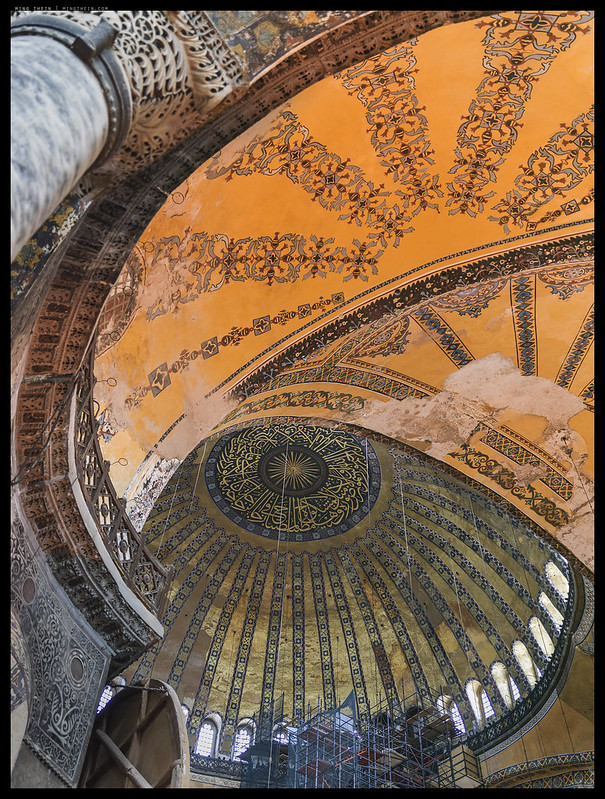
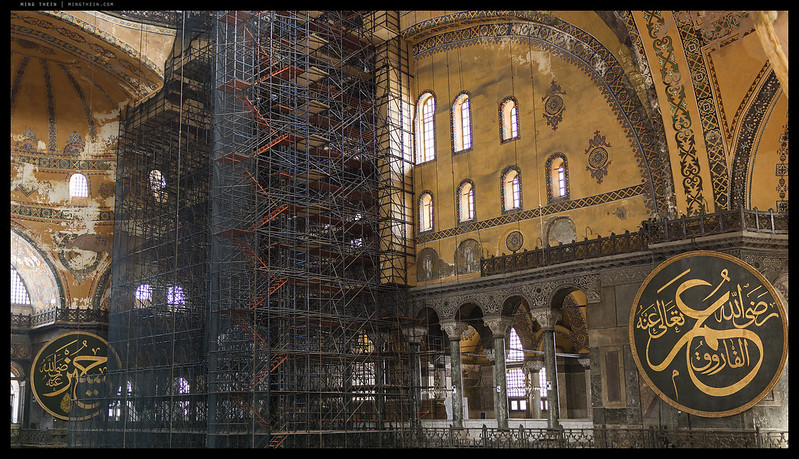
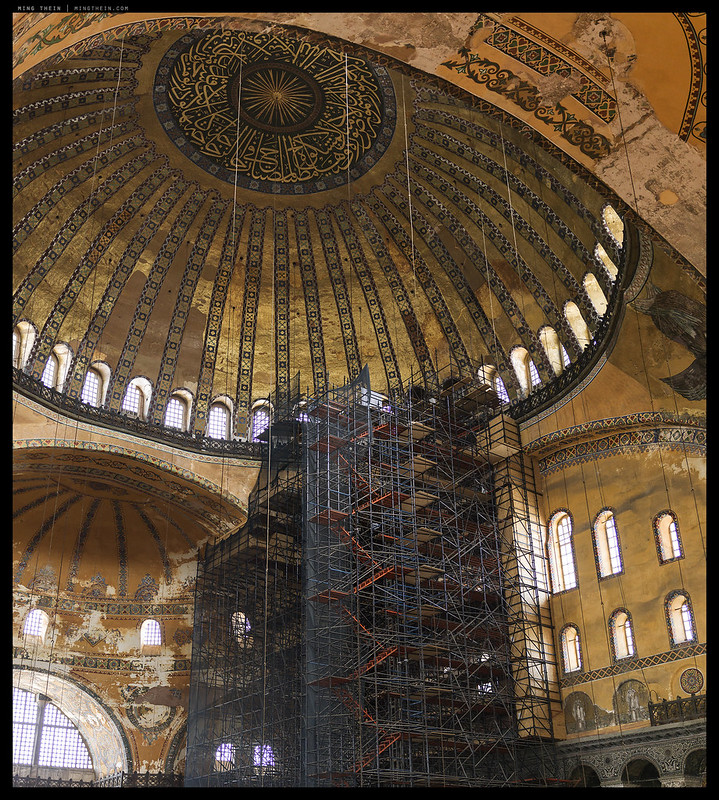
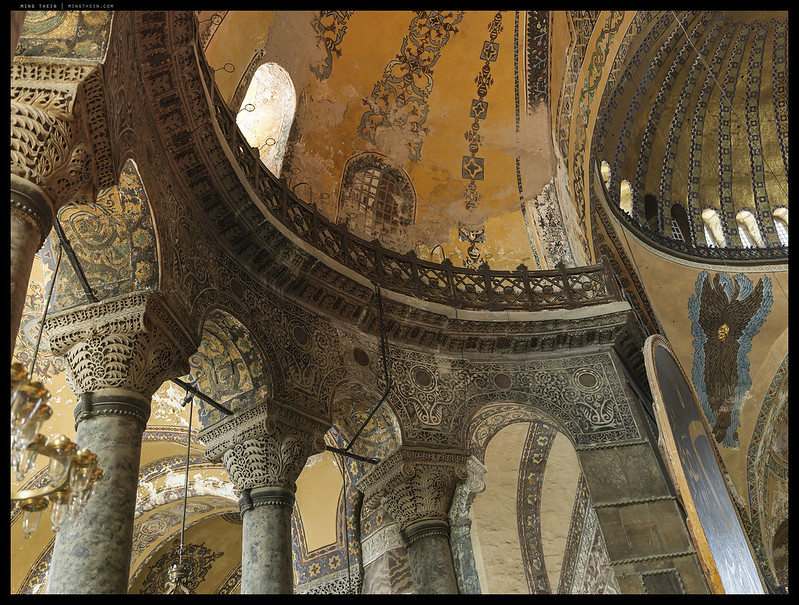
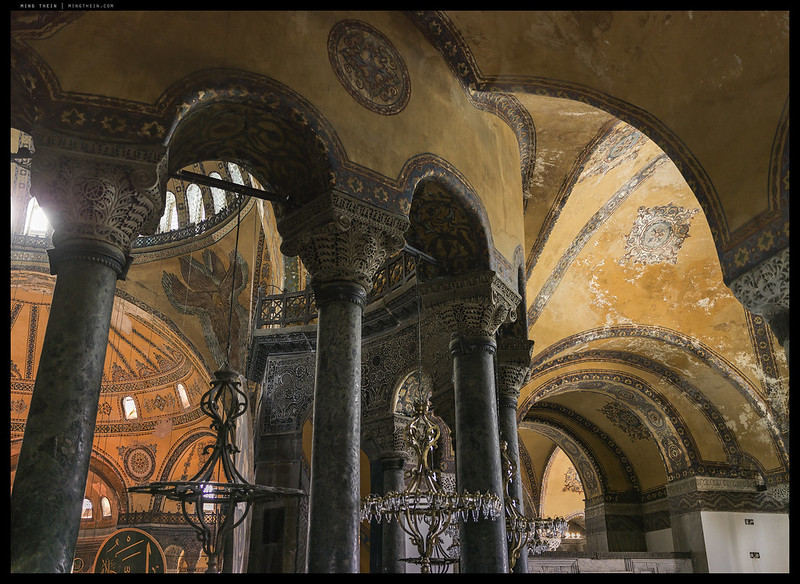
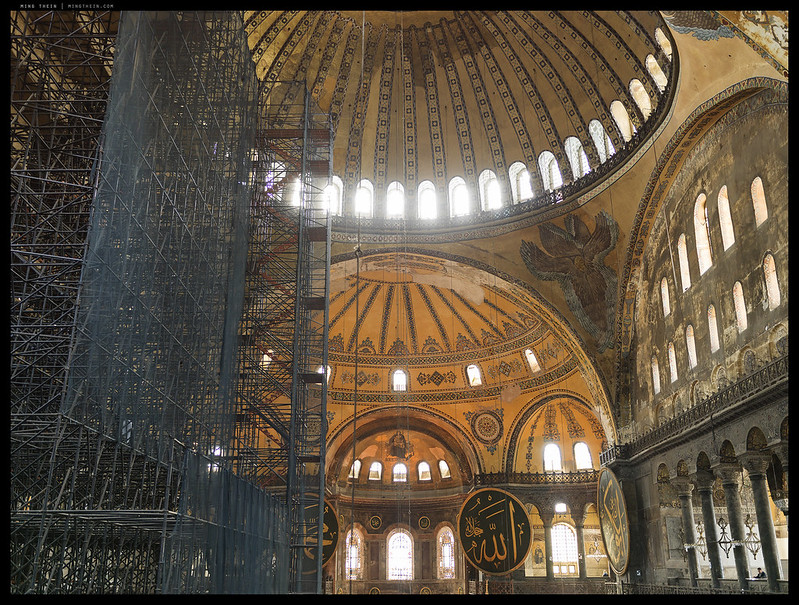

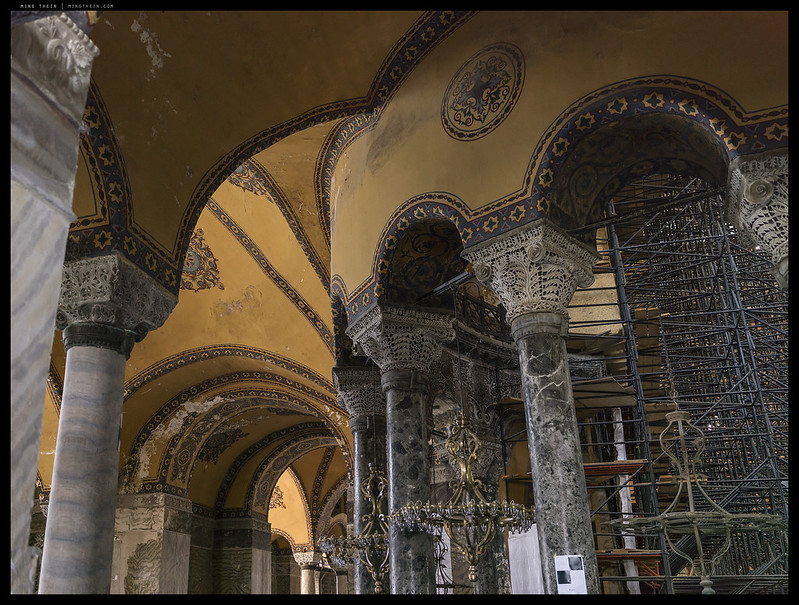
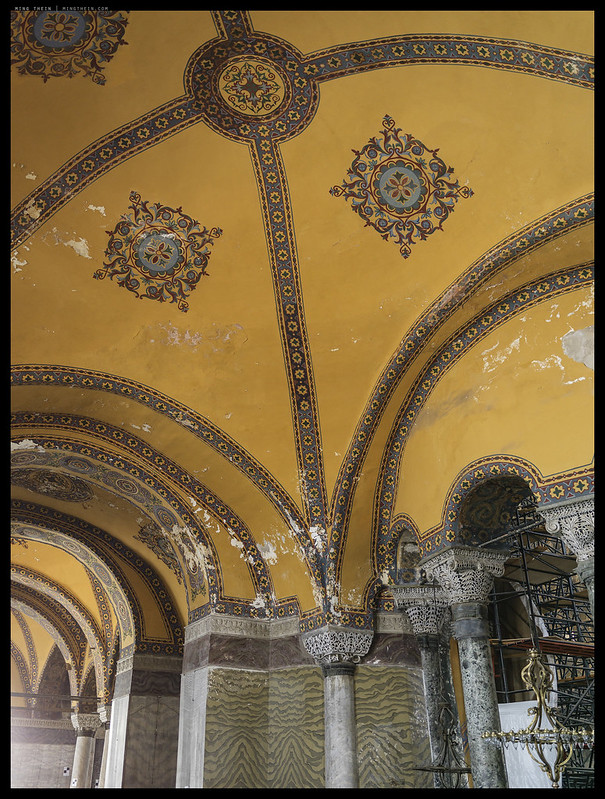
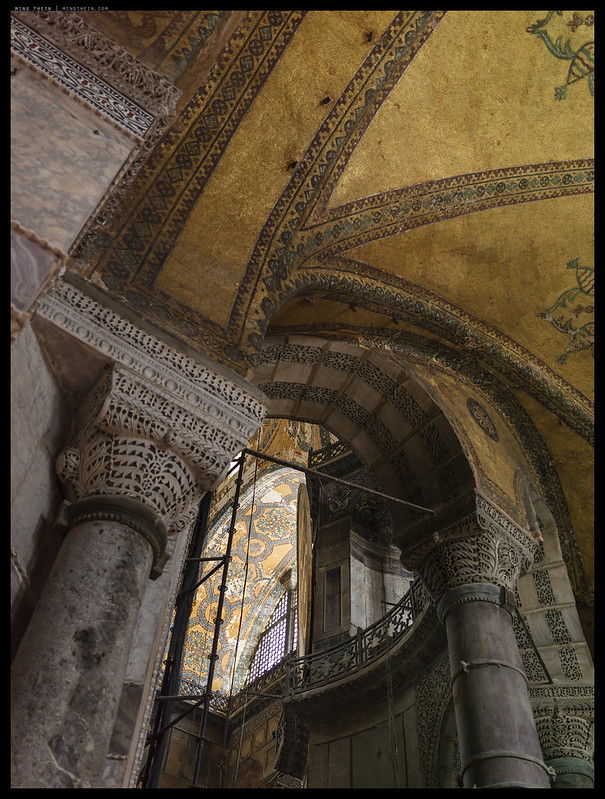
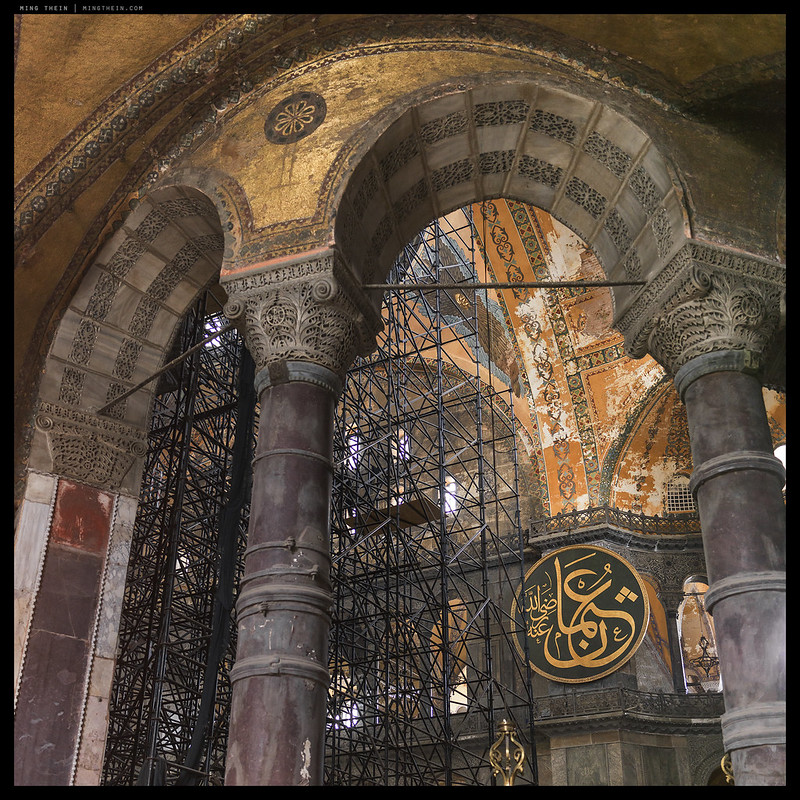
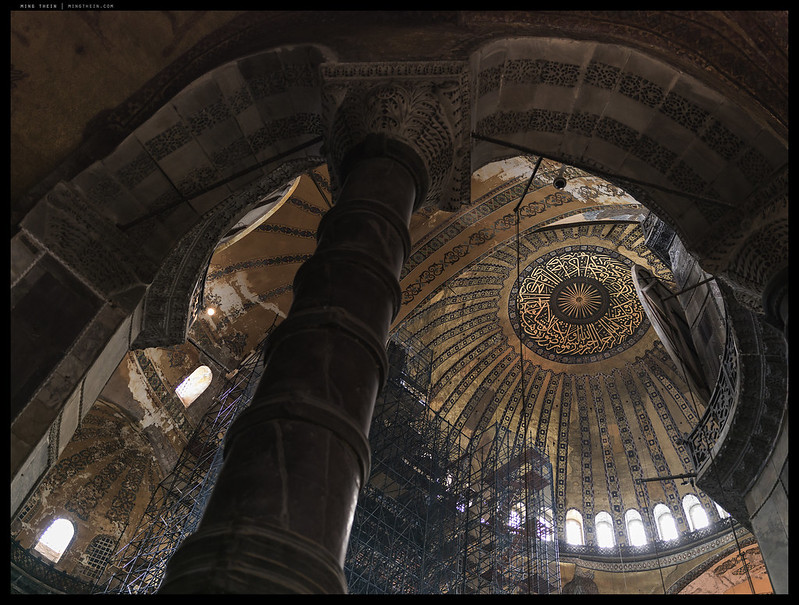
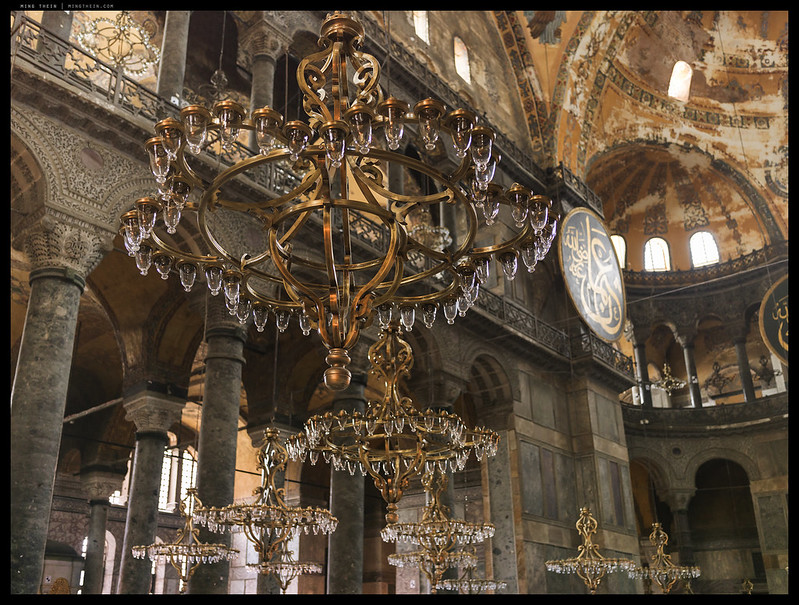
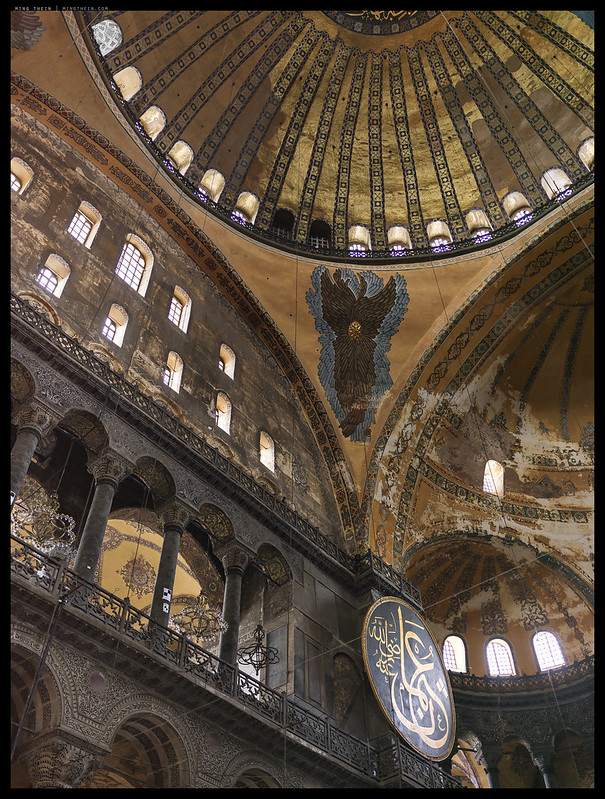
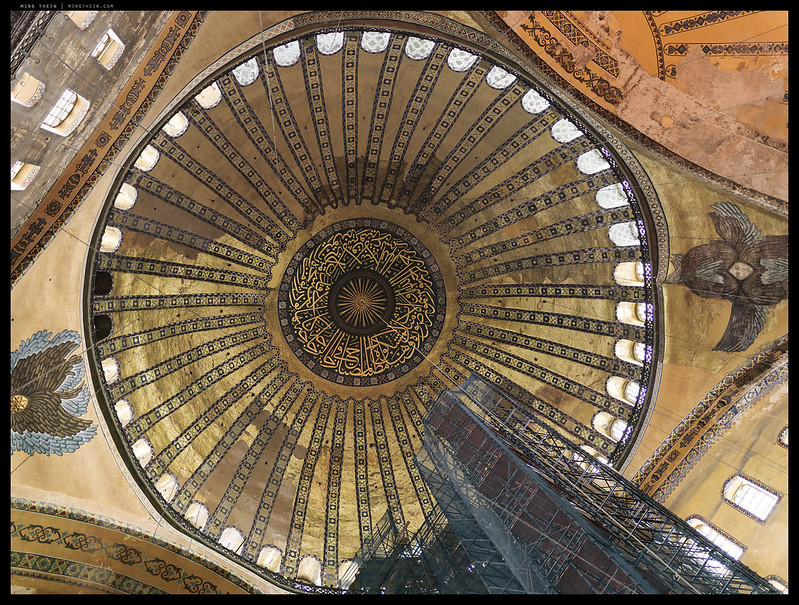





astounding pics… love them all. Interesting to focus on the scaffold too it looks kind of impressive!
Thanks – it’s been there so long it’s pretty much part of the building…
I was there in the early nineties without scaffolding… the restoration is amazing. What I remember was the chandelier, its concentric rings for, I suppose candles, the huge diameter, the height it was suspended from, and the proximity to the ground – maybe three and a half meters… so much so that any photo taken from above the chandelier looked like the rings were on the floor. Very curious
Beautiful pictures! Love that first one! I also made a flying visit to Istanbul last year, and intend to go back when I get the chance, some great architecture there. Did you have time to see any of the mosques or anywhere else in Istanbul as well?
Ignore that last question, I found your other photos on Flickr – somehow I missed them when you posted there!
🙂
Thanks – yes, I did – more to come, after some heavy curation…
Having been inspired by your architecture photography, I am pleased to see your take on this subject. Beautifully done. I hope to see your take on the Blue Mosque as well.
Thanks – yes, Blue mosque to come 🙂
The link to part 1 is broken 🙂 (feel free to delete this when you’ve fixed it)
Thanks. I swear wordpress’ habit of adding an extra space by default is going to kill me…
Curious as to why you left the CA on certain images.
It’s not CA, that’s stained glass when down sampled 🙂
I was first there nearly 20 years ago; I see the wretched scaffolding is still there.
Were you up in the ‘gallery’?
As a very cosmopolitan city, the ‘Red Apple’, ‘The City of the World’s Desire’ has an example of this in the Hagia Sophia. There is a Viking inscription on the balustrade in the gallery.
Oh, and delightful photos!
The very upper gallery wasn’t open – or did you mean the first level?
I meant the ‘first floor’.
Cosmopolitan? It was really one when thriving christian especially greek, jewish, armenian communities existed there with their religious places to worship . Not any more. Unless you mean visitors from other countries. In that case Mekka is cosmopolitan too.
Ming, the first image, the spiral, is fabulous.
Thanks!
good post
Stunning!
Thanks!